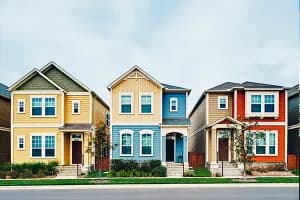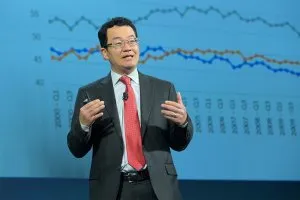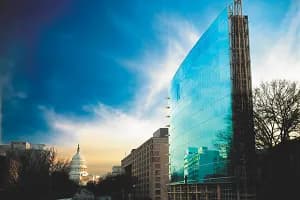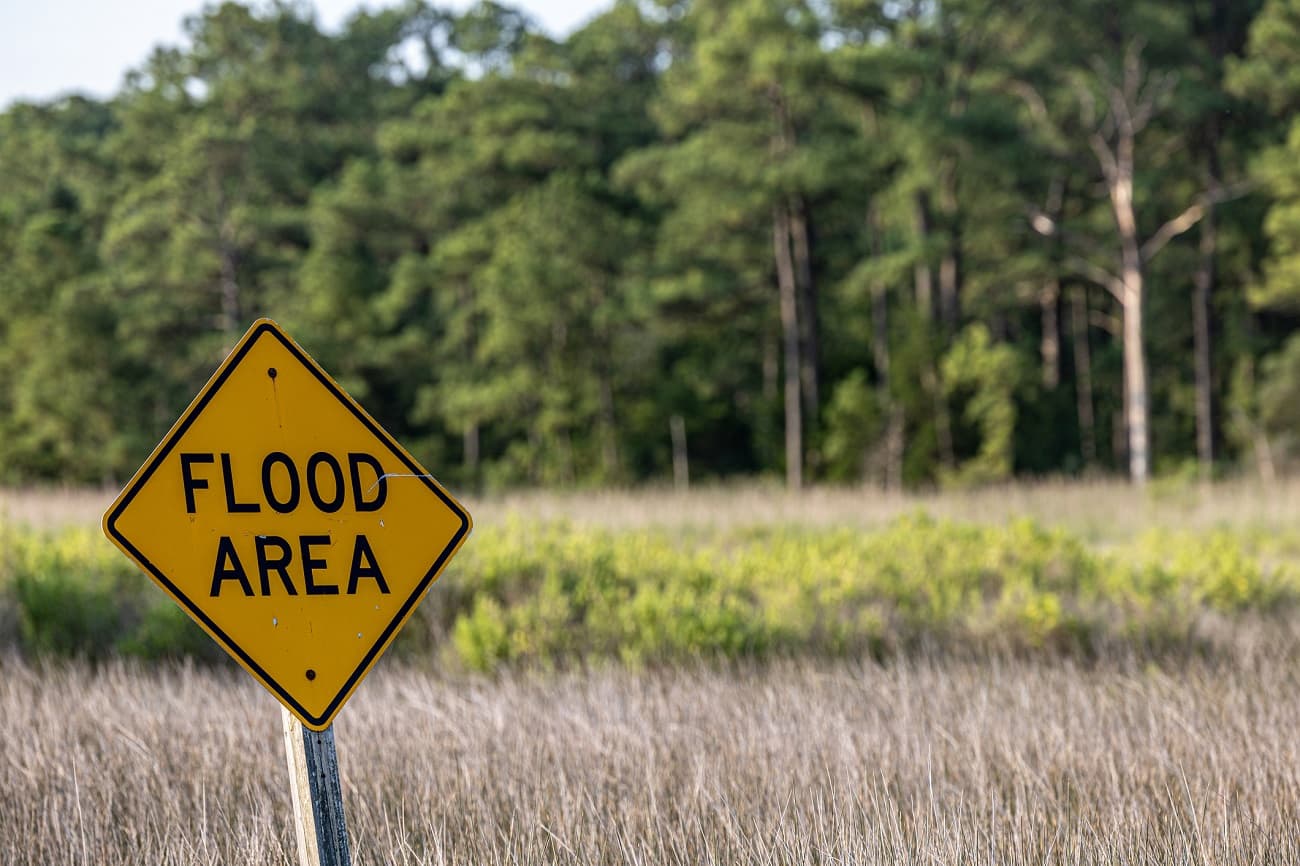REALTOR® Craig Della Penna has been shouting from the rooftops about the economic and community benefits of rails to trails — or the practice of converting unused railroad lines to biking and hiking trails — for more than 30 years.
“It was 1994, and I was under contract to write a guidebook on the Northeast,” recalls the Florence, Mass., resident. “My wife Kathy and I bought bikes and biked every mile of open rail trail.”

Della Penna was hooked. From then on, he made rails to trails a central part of his life. He calls himself the first REALTOR® in the United States to specialize in the sale of houses near rail trails. He even opened a bed and breakfast that sits eight feet from a converted rail line to show how rail trails can revitalize communities.
It’s not just rails to trails that have a strong economic return on investment. Parks, trails not converted from rail lines, and other green infrastructure all have paybacks in new-business creation, reducing health care costs, and so much more.
Making that case hasn’t been easy — until recently. There’s now a growing body of research and real-life examples showing that these investments have huge payoffs.
The Data Behind Rail-To-Trail Projects
It might be hard to believe today, considering that there are hundreds and hundreds of miles of trails throughout the country that began as railroad lines. But getting community support for them has taken patience and education, something Della Penna has become an expert on.
After he found his passion, Della Penna was surprised to find that many people didn’t share his love of rail trails. “I started hearing that in Western Massachusetts, people were opposed to conversions in their neighborhoods and voted them down,” he says. “I’d been on 150 such places and never saw one that wasn’t well loved and the best-loved place in the community.”
In the mid-1990s, Della Penna was hired by Rails to Trails Conservancy. “I taught local groups how to prevent the war against these conversions or, if the war was already underway, how to win it,” he explains.
“I’ve found there are three stages,” he says. “The first is that whatever that newfangled idea is, people will scoff and say, ‘That’ll never happen.’ The second involves serious opponents. The third, and it’s what I see often now, is this exact phrase: ‘Who could be opposed to this?’

“I don’t know why anyone would be opposed to these rail-to-trail conversions other than to say people are afraid of change,” states Della Penna. “The serious arguments against them are that ‘bad guys’ will come or that people living nearby will lose privacy. Also, early on, all those ‘antis’ also said they’d never be able to sell their house if the trail got built nearby.
“Also, I’d go to these pressure-packed meetings, and people would say, ‘Don’t tell us what to do. You don’t live near one,’” he recalls.
So, Della Penna put his money where his mouth was. He bought the rail-adjacent Sugar Maple Trailside Inn. “I wanted to not just talk the talk but walk the walk,” he says. “I could say, ‘I hear your fear, but I live eight feet from one. We operate a B&B, and if you’re really fearful, I’ll give you a weeknight stay so you can wake up to the laughter of kids biking to school.’ Only a couple of people have ever taken me up on that offer.”
Della Penna, CRS, GRI, GREEN, also began selling real estate near rails. “I became the first REALTOR® to specialize in these linear parks,” he says, noting that he often represents buyers who want to live near a trail after experiencing it at his B&B.
Studies show the value of living near rails to trails or straight-up trails:
- A 2007 studypdf of home values near a rail that became a trail in Massachusetts showed the average sale price in a designated area near the trail dropped a year prior to the trail opening, then came back up the year it opened. Average prices saw a steady climb afterwards. Prices not near the rail fluctuated.
- A 2023 study of the 70 completed miles of the planned 100-plus-mile Mass Central Rail Trail found the trail has 4-5 million users a year, about 400,000 of them overnight visitors, and a $200-million annual economic impact.
- The Trail Town Program tracks the economic impact of rail-to-trail projects. The 150-mile Great Allegheny Passage from Pittsburgh, Pa., to Cumberland, Md., has a $50-million annual economic impact, rising from 25 percent to 40 percent of local income over 6 years.
- A term, wallets on wheels, has emerged from various studies to describe the economic effect of bikers using trails; one such study in Oregon found that cycling tourism’s contribution amounted to $400 million annually or $1.1 million per day.

Strong Evidence Backs Quality Trails and Bike Infrastructure
Bikers bring the best return, including increased home values, to communities that construct strong bike infrastructure to support biker safety and ease of access, according to Jennifer Dill, professor of urban studies and planning at Portland State University in Oregon.
“My colleague did research on what she called ‘higher-quality bike facilities,’” explains Dill. “That didn’t include white stripes on the side of the road. It included what the city of Portland calls neighborhood greenways and what other cities call bike boulevards. That’s where they take a low vehicle-volume residential street and install humps or other diverters to slow down motor vehicle traffic and reduce volume. If you’re biking, you just bike down the middle.”

The result? “The closer homes were to such facilities, the higher the value,” says Dill. “But also, the higher the density of those bike facilities within a half mile, the more it contributed to home values.”
Compelling new research is linking the public health and quality-of-life benefits of parks and trails.
The economic benefits of bike trails and infrastructure depend on a number of best practices:
- The quality of the facilities — It’s hard to prove the effect of trails on home values, says Dill, and sometimes research shows mixed results, often due to perceptions of safety. Dill believes the results depend on the quality of the trail facilities.
“We need to think about how well we design these facilities,” she says. “Planners need to design them in a way that reduces or discourages the type of activity you don’t want on the trail. Also, the more these facilities are used, the less likely those things will happen, too.”
However, Dill adds that there’s often a difference between people’s perceptions of safety versus reality. “The odds of someone dying in a car crash are higher than something equally terrible happening on that trail,” she explains.
- The combination of bike or pedestrian infrastructure, greenery and traffic calming — “The evidence is consistent that in the United States, in local commercial districts in urban areas with investments in bike or pedestrian infrastructure, it has had a positive value on things like sales and economic activity,” says Dill. “Rarely has it been negative. Most of these areas also included street trees, plantings and green streetscape,” she adds. “As a package, those improvements often have a positive effect on the economics. One study we did in Portland looked at sales and jobs in the retail and restaurant sector and found positive effects.”
Data on infrastructure improvements in Minneapolis supports Dill’s research. In 2012, bike lanes were installed on Central Avenue by reducing the width of the travel lane and removing parking lanes. Retail employment increased by 12.64 percent — significantly higher than the 8.54 percent increase in a control area nearby — and a 52.44 percent increase in food sales, more than double the 22.46 percent increase in the control area.
- Perceptions of safety and noise matter — “One place where we didn’t see positive effects — but this is hard to prove — was in areas where there was still a lot of motor vehicle traffic at high speeds,” notes Dill. “Some of the concerns were about noise, and there were also concerns about safety. There’s a combination of things you have to think about in planning that infrastructure.”
With wise planning, the health benefits are also quantifiable. “Research that’s compelling now is linking the public health and quality-of-life benefits of parks and trails,” explains Megan Lawson, an economist and outdoor economy expert at Headwaters Economics in Bozeman, Mont. “People with trails nearby tend to use them more, so they’re more physically active. Across the population, that community is more active, and that lowers health care costs.”
How GSI Is Minimizing the Effects of Flooding
When communities use green infrastructure to protect against extreme weather and the disasters caused by it, such as flooding, they’re also finding strong returns on investment, plus huge community support.
Green stormwater infrastructure (GSI) is a niche subset of the parks, trees, open space and trails that many call green infrastructure, explains Barbara L. Hopkins, ASLA, a lawyer and the executive director of the Green Infrastructure Leadership Exchange in Towson, Md. Its entire purpose is to green up areas in ways that capture water and keep it from entering grey infrastructure systems like water supply and waste treatment systems.
“Our members use GSI — such as vegetated swales, bioretention, rain gardens and green roofs — everywhere, including on roadways and in parks — to complement grey infrastructure,” she says. “It keeps rain where it falls and minimizes the flow of stormwater into grey systems that are now undersized for the heightened precipitation caused by climate change.
“GSI practices are very focused on managing stormwater, but because it’s green, these practices can also improve air quality and be embellishments to small parks,” says Hopkins. “The great thing about GSI are the co-benefits. The plants are cleaning the air. If they’re in a park, you’re providing recreational benefits. And because you’re keeping stormwater out of a grey system, you’re helping a community avoid spending additional dollars on that system.”
Here are examples of and best practices for GSI that will bring strong ROI:
- Vegetated swales are green plantings designed to capture stormwater. “These take water off the roadway and clean it by taking out the pollutants that come off things like cars and tires,” explains Hopkins. “Without these, the stormwater would flow into grey infrastructure. It’s typically taken to a sewage treatment plant to be treated or to the nearest body of water. So that gunk off cars and roads sometimes goes straight into a river.
“We’re trying to capture that rainwater right where it falls and keep as much as we can out of the pipes,” she says. “If we can’t do that, let’s at least slow it down so not as much is going into pipes or sewage treatment plants. The swale is trying to do all those things with plants, where it’s sited, and based on how it’s engineered and sized.” Bioretention and rain gardens are similar concepts. “The difference between the two is that a rain garden is typically smaller than bioretention,” says Hopkins. “A rain garden is probably appropriate for a corner of a vacant lot or someone’s backyard. It doesn’t require a lot of engineering, though you have to do some sizing to understand the volume of runoff to keep that rain where it falls.
 Courtesy of Atlanta Beltline, photos by Christopher T Martin LLCTrails serve multiple purposes: recreation, resilience and beauty. Photos highlight the Atlanta Beltline.
Courtesy of Atlanta Beltline, photos by Christopher T Martin LLCTrails serve multiple purposes: recreation, resilience and beauty. Photos highlight the Atlanta Beltline.“Bioretention can be huge, sometimes football-field size,” she adds. “A good example is a stormwater park, and one of the most famous ones is the Historic Fourth Ward Park in Atlanta. It’s 17 acres, and the whole thing can fill with water. Some of the park’s features aren’t usable when it’s filled. However, most of the time it’s not full.”
- The benefits of GSI are quantifiable. Hopkins’ organization recently developed the GSI Impact Hub to help community planners and leaders make the economic case for these improvements. “What’s the value of controlling flooding over time?” asks Hopkins. “What’s the economic value of improved air quality? Of heat reduction in terms of people’s health and reduced emergency room visits? The tool helps planners and designers get early buy-in.”
- Several cities are on the forefront of GSI and can be a learning ground. “Philadelphia is absolutely phenomenal,” says Hopkins. “It has a program that has kept millions of gallons out of the grey infrastructure. There’s a fabric of vacant lots repurposed for stormwater management.
Communities experiencing success have infrastructure projects using flood mitigation and water treatment to bring in recreation opportunities.
- “I don’t think I’ve seen a city that does quite as much with the conversion of vacant lots in under-resourced neighborhoods,” she adds. “They put in GSI and other benefits, and they do fabulous community outreach. They’re also doing amazing things to make the most of co-benefits. GSI has to be maintained over time, and planners have to rely on the community to help. Philly has the best workforce development program where they’re training people in the community to teach residents how to maintain the GSI.”
"Seattle also has a fabulous network of green infrastructure sites,” says Hopkins. “Not only are they managing stormwater and supporting under-resourced communities, but they’ve used GSI to save salmon populations.”
 Photo by Gene Bisbee
Photo by Gene BisbeeWashington Sammamish River Trail, in King County, Wash - Lawson says her home of Bozeman has also worked to minimize floodwaters. “My colleagues work on flood mitigation and helping communities be more prepared for floods, and there are nice examples of using parks and trails as water catchment to help mitigate flooding,” she says. “On a very small scale, they did that in Bozeman. They went upstream and widened the whole area so the creek that flows downtown has room to flood upstream of the downtown.”
- If your upgrades excite your community, you’ll get better buy-in. “There’s a big project on the Jordan River in Utah,” notes Lawson. “That river kept flooding, and planners decided to look at the problem holistically: ‘Let’s do river restoration, clean out invasive species, and build a big park in addition to moving that essential infrastructure.’ They buried the water and sewer infrastructure deeper and built a whitewater park over it. They decided to not just plan for future climate conditions but to also make their town a better place to live.
“When we see communities experiencing success, it’s often when there are big infrastructure projects that have to happen around flood mitigation and water treatment that also bring in recreation opportunities,” says Lawson. “Those communities have a bigger interested group of stakeholders. It also helps unlock more funding sources at the state and federal levels for projects, and more ambitious things can happen.”











